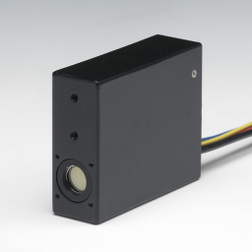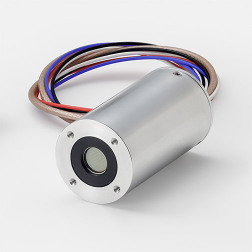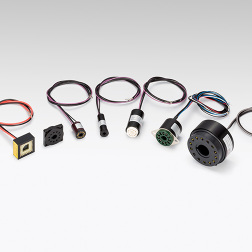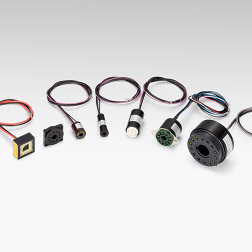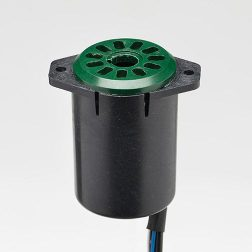Define lvds
LVDS (Low-Voltage Differential Signaling) is an electrical standard for high-speed data transmission. It uses differential signaling to increase transmission rates and signal integrity while reducing power consumption and interference. It is an electrical transmission system that can run at very high speeds over low-cost twisted-pair copper cables. These twisted pairs can maintain the 100-ohm differential impedance required for LVDS data signals. LVDS has become the preferred standard for differential signal transmission because it consumes less power while providing high data rates. It uses high-speed analog circuit technology to achieve multi-gigabit per second data transmission over copper interconnects and is widely used in high-speed data transmission. These characteristics make LVDS the most popular differential data transmission standard in the industry.

Lvds cable
LVDS cables are ideal for low power, high data transfer and are widely used in computer systems. Before the introduction of LVDS cables, data rates were low and the cables took up more space. The SCSI standard now supports LVDS, enabling cable assemblies to achieve higher data rates and longer cable lengths.
LVDS cable assemblies are also used in video interface devices, especially when transferring video data from a graphics adapter to a computer display, such as an LCD screen, FPD-Link, or OpenLDI standards. The maximum pixel clock supported by LVDS cable assemblies is 112 MHz, which enables display resolutions of 1400 x 1050 (SXGA+) at a 60 Hz refresh rate. In a dual-link configuration, display resolutions can be increased to 2048 x 1536 (QXGA) at a 60 Hz refresh rate. FPD-Link cable lengths can reach approximately 5 meters, while LDI standard cable lengths can be extended to approximately 10 meters. The typical cable used is twisted pair around 28 – 32 AWG, however, FCC / FPC cables are very common, especially when used with devices such as laptops or equipment where space is at a premium.
Lvds interface
LVDS interface is a high-speed, low-power and noise-resistant digital interface that enables reliable and fast data transmission through differential signal pairs. Its electrical characteristics, such as low voltage level, high differential impedance and excellent common-mode rejection, ensure signal integrity in long-distance transmission.
Common LVDS interface variations include:
Multidrop LVDS: Suitable for scenarios where multiple receivers share a single transmitter.
Multipoint LVDS: Designed for bidirectional communication between multiple transmitters and receivers on a common bus.
Lvds signal
LVDS signal (Low-Voltage Differential Signaling Signal) is a type of electrical signal used for high-speed data transmission. It transmits data through differential signal pairs to increase transmission rate, reduce power consumption and enhance anti-interference ability.
Differential signal pair: LVDS signal transmits data through a pair of complementary electrical signal lines. Each pair of lines transmits positive and negative signals respectively, and the receiving end decodes the information by comparing the voltage difference between the two signal lines. This differential transmission method can effectively resist noise and interference.
Low voltage operation: LVDS signals usually operate at low voltages, such as 1.2V, which helps reduce power consumption and heat generation.
High data transmission rate: LVDS supports high-speed data transmission, usually in the range of several Gb/s, suitable for applications requiring high bandwidth.
High differential impedance: The impedance of LVDS signal lines is 100 ohms, which helps reduce signal reflection and attenuation and maintain signal integrity.
Common-mode rejection: LVDS signals have excellent common-mode rejection capabilities, which can effectively suppress common-mode noise and further enhance the stability of data transmission.
Lvds voltage levels
Differential voltage (Vdiff): The differential voltage of LVDS refers to the voltage difference between the positive signal and the negative signal. The LVDS standard usually requires the differential voltage to be in the range of 0.1V to 0.6V. The specific voltage value may vary depending on different implementations and device requirements.
The typical differential voltage range is 0.2V to 0.4V.
Single-ended voltage (VCM): The single-ended voltage on the LVDS signal line refers to the voltage of each line relative to ground. The LVDS standard usually operates in a low voltage environment, and the typical single-ended voltage is 0V to 1.2V.
For LVDS signals, there is usually a common mode voltage (VCM), which may be a reference voltage of 1.2V, but in actual applications, the voltage may be adjusted.
Specific examples of signal levels:
Logic high level: In a typical LVDS implementation, when the voltage of the positive signal line in the differential pair is higher than the negative signal line, it usually indicates a logic high level.
Logic Low: When the positive signal line in a differential pair is at a lower voltage than the negative signal line, it usually indicates a logic low.
For information and purchase, please contact us:emi-ic.com




